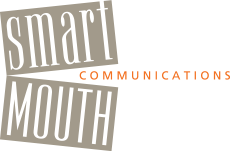by Beth Levine | Nov 28, 2011 | Just Mouthing Off
Otis is new to the family. I thought he was going to be just a pet. Turns out, he’s a teacher too. Otis is a Maltese mix, almost a year old, cute as a button and sweet as pie. And, to boot, he’s very smart. He’s been with us just shy of a week, but already Otis has provided multiple teachable moments.
In particular, Otis has been a case-in-point on
good communications practices. Here are just a few of the important lessons Otis has re-taught me these past few days …
Brevity. Otis responds best to one-word commands. Too many words, and it’s all a jumble, and then he’s unsure of what’s expected. And nothing happens. Hmmmm, sound familiar? Clarity and understanding often come from brevity.
Consistency. Consistency of message, voice and tone are vital in leading, managing … or in the role of master. Just with our being consistent in word, voice and tone, Otis already knows the drill around the house. Consistency is efficient and ultimately reassuring to an audience that knows you.
Positivity. Wow, the power of positive feedback! Dogs aren’t the only ones who like to be told they’re good. It’s universal. You get what you give, and positivity feeds everyone. Let’s face it, nothing is more motivating than a good stroking! It feels good to give it, and feels good to receive it.
Thanks, Otis, for inspiring this blogpost … and welcome to the family!
by Beth Levine | Nov 22, 2011 | Just Mouthing Off
“A speaker has to determine what he is trying to do and what is the setting. You give speeches for different reasons, and you’ve gotta know going in: Am I there to inform and inspire or am I going in there to entertain and impress? Then lock down two or three outlined points to inform them or razzle-dazzle them.”
– The Reverend Al Sharpton
Amen, Reverend Sharpton, Amen!
by Beth Levine | Nov 8, 2011 | Just Mouthing Off
Wow, I learned a lot. At last week’s concluding session of SmartTalk – a year-long seminar for professionals who came together monthly to practice and polish their presentation skills – participants were asked, on the spot, to stand up and give a 3-minute talk on something they had learned in SmartTalk. They gave great talks, and it might well be that I learned more from them than they did from me!
So here are my takeaways from their “teachbacks” …
1. Flipping the switch in your brain to think about your audience – their needs, biases, expectations – may be all you need to do in some cases in order to communicate effectively. The tendency is to think about ourselves – our own needs, biases, expectations – when addressing an audience. But when you’re communicating, it’s simply not all about you, it’s all about them. All the fancy preparation in the world may never beat just empathizing with your audience. Thanks for sharing the stories that illustrated this, SmartTalkers!
2. The disclaimers, explanations, apologies, and self-deprecation that precede many people’s communications – formally at a podium, or when speaking up in a meeting – do nothing but make an audience uncomfortable. Communicating is all about them, your audience, and they expect speakers to be competent, together, successful. So don’t put them on edge by trying to lower the bar for yourself and telling them you’re not 100% prepared or that you’re not very good at this. Instead, make everyone, including yourself, feel good about your presentation. SmartTalkers were compelled to approach the podium saying, “I love doing this!” It made such a difference in their performances. No more sandbagging!
3. Packaging and prioritizing are huge. We all have lots of information to share in meetings and presentations, but unless we package it inside a message – a point that conveys the value, significance, meaning, or context for the info – it can so easily get lost. SmartTalkers definitely learned, and demonstrated, that they know how to pare down information and share it selectively, so that what they say is understood and remembered by their audiences. Yes, there is such a thing as TMI!
Thank you, thank you to all SmartTalk participants, you were awesome! Isn’t it amazing how long 3 minutes can be and how short 9 months can be? Lessons learned indeed.
by Beth Levine | Oct 19, 2011 | Just Mouthing Off
Schmoozing today with my electrician and painter, and for way longer than I should have, I started to think about how people connect – even, and especially, people who don’t know one another. From that, I extrapolated a few common themes that are good to keep in mind when you need to connect with an audience you don’t know at all or very well.
- Ask questions, be curious.
- Show interest in what you know about the other person’s work or mission.
- Tell relevant stories.
- Get personal, reveal just a little bit that makes you human and real.
- Treat everyone as if they’re the most important person or group you’ve talked to all day.
Incorporate a few or all of these in your next presentation, and see how it feels. It worked for me with Shane and Matt today, we could’ve talked forever!
by Beth Levine | Oct 11, 2011 | Just Mouthing Off
Do you deliver when you speak? Do you engage and connect physically as well as intellectually? It’s not enough just to prepare some remarks or show some slides. You’ve got to literally show up and deliver … with your whole body!
Eyes. Use your eyes to connect. Look around the room at everyone, being very careful not to get stuck on one person or one section of a room. I’ve often heard the “Z” formation recommended; start by looking in the back corner of the room and slowly allow your gaze to move forward on the diagonal, from side to side, as if making a Z with your eyes until you reach the front. Then do it again …
Hands. For some reason, talking with your hands has a bad rap. It’s okay to talk with your hands, as long as your gestures aren’t wildly distracting … and as long as your hands aren’t blocking your face. If it’s natural for you to use your hands for emphasis, then go for it. Better to be animated than stiff.
Voice. If your body and your visuals are the video, your voice is the audio. Play it! Use pace, volume, and intonation to keep the soundtrack moving and interesting. Use silence too. Turn off the audio for a few seconds of pause to recapture attention. Being able to modulate your voice while speaking, versus droning through a presentation, makes you appear confident and in command of the material. And it’s a heck of a lot easier on the ears of your audience.
Body. Don’t cross your arms. Don’t jiggle the coins in your pocket. Don’t play with your hair. Yada yada yada. You know all of the
don’ts. How about the do’s? Do use your body … move toward the audience, lean into the audience, have all gestures open to and embracing of the audience. If at a podium with a fixed mic, be on the balls of your feet, reaching toward the audience. It’s a lot more engaging than the slouched podium lean, or the side-to-side sway, or the hanging back on heels stance.
Movement. Use the room. If you have space to move around, and proximity to a fixed mic isn’t an issue, then use your floor space as if it’s a stage. Move into and around your audience.
Be super present and in their face and space, and you will have their attention.



